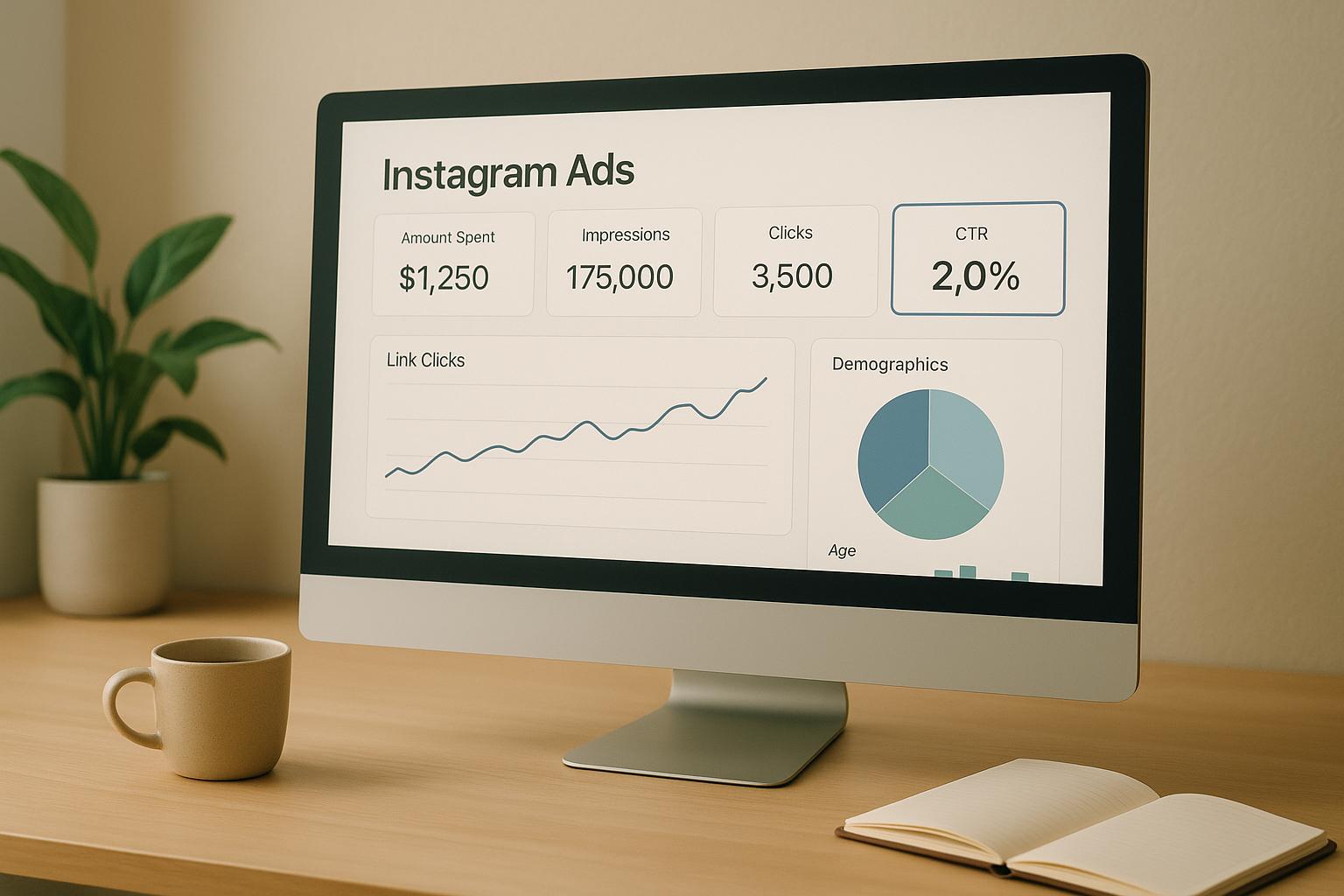Measuring content ROI in 2025 is easier with tools designed to track, analyze, and connect content performance to revenue. Here are five tools that stand out:
- Google Analytics 4 (GA4): Tracks user interactions, offers advanced attribution models, and integrates with Google services. Free for most businesses.
- Planly Analytics: Focuses on social media ROI with real-time monitoring and custom dashboards.
- Swydo: Ideal for agencies, combining paid and organic data with white-label reporting.
- MarketMind AI: Uses predictive analytics and advanced attribution to analyze content performance.
- Top SEO Marketing Directory: Helps businesses find SEO tools and services but doesn’t directly measure ROI.
Each tool suits different needs, from tracking social media performance to predictive insights. Smaller teams may prefer GA4 or Planly Analytics, while agencies and data-driven organizations might benefit from Swydo or MarketMind AI. For SEO-focused strategies, the Top SEO Marketing Directory is a helpful resource.
Quick Comparison
| Tool | Key Features | Pricing | Best For |
|---|---|---|---|
| Google Analytics 4 | Advanced tracking, free tier | Free/$ Premium (360) | SMBs, general content tracking |
| Planly Analytics | Social media-focused insights | Custom pricing | Social media-heavy strategies |
| Swydo | White-label reporting, automation | $200+/month | Agencies |
| MarketMind AI | Predictive analytics, AI attribution | Custom pricing | Data-driven organizations |
| Top SEO Directory | SEO tools and services directory | Free/$49 Premium | SEO-focused strategies |
Choose a tool based on your goals, team size, and budget. Start with one and expand your toolkit as your needs grow.
Content Marketing ROI: Prove the Value of Your Content Strategy Before You Spend a $ w/ Alex Birkett
1. Google Analytics 4
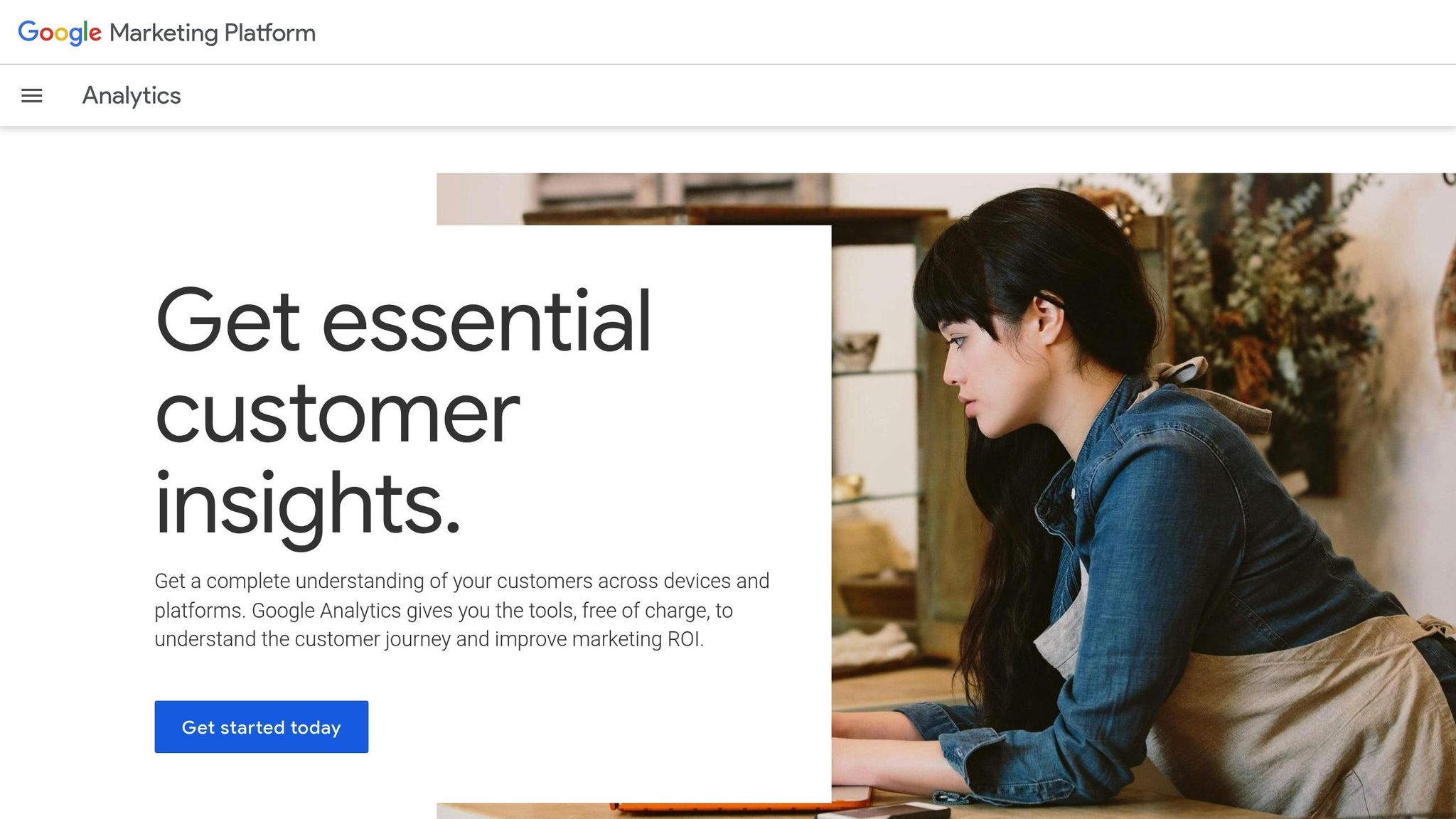
Google Analytics 4 (GA4) has become a go-to tool for measuring content ROI. Its event-based tracking system offers a deeper understanding of user interactions, going beyond traditional page views to capture a wide range of engagement metrics.
Data Integration
One of GA4's standout features is its seamless integration with BigQuery. This allows businesses to merge content performance data with tools like customer relationship management systems, email marketing platforms, and sales databases. By doing so, it connects content insights with the broader customer journey. GA4 also integrates effortlessly with platforms like Google Ads, Search Console, and YouTube Analytics, minimizing the need for manual data imports.
The platform's Measurement Protocol takes things a step further by enabling offline data imports. For instance, businesses can track in-store purchases or phone conversions and link them back to online content, such as blog posts or downloadable resources. These integrations, paired with advanced attribution tools, make GA4 a powerful ally for understanding content performance.
Attribution Modeling
GA4 offers a range of attribution models, including one driven by machine learning, which distributes credit across all touchpoints in a customer’s journey. This method moves beyond the outdated last-click attribution model by accounting for the various ways users engage with content - like reading a blog post, interacting on social media, and finally converting via email. Such detailed attribution is critical for accurately measuring content ROI.
Additionally, GA4's cross-device tracking addresses the challenges of multi-device usage. By linking user activity across smartphones, tablets, and desktops (when signed into Google accounts), GA4 provides a clearer picture of the customer journey.
Real-Time Monitoring
GA4's real-time reporting capabilities allow content teams to keep a close eye on campaign performance as it happens. Metrics like active users, traffic sources, and conversion events update almost instantly, making it easier to spot trends and react quickly. Teams can also set up custom alerts to flag significant changes in performance metrics, ensuring they can respond promptly to unexpected shifts. These real-time insights feed into customizable dashboards, offering a deeper dive into ROI analysis.
Custom Metrics and Dashboards
The Explorations feature in GA4 provides advanced tools for analyzing user behavior, such as funnel reports, cohort analysis, and path analysis. For example, marketers can create custom funnels to track how users move from blog posts to product pages and eventually make a purchase. Calculated metrics, like "Revenue per Content Session", offer even more refined insights by combining different data points. These features make it easier for content teams to understand and optimize their impact.
Pricing
GA4 is free for most businesses and offers a robust set of features that meet the needs of small to medium-sized organizations. For larger enterprises with more complex requirements, Google Analytics 360 is available as a premium option. This version includes perks like unsampled reports, faster data updates, and dedicated support, all while handling significantly larger data volumes with ease.
2. Planly Analytics
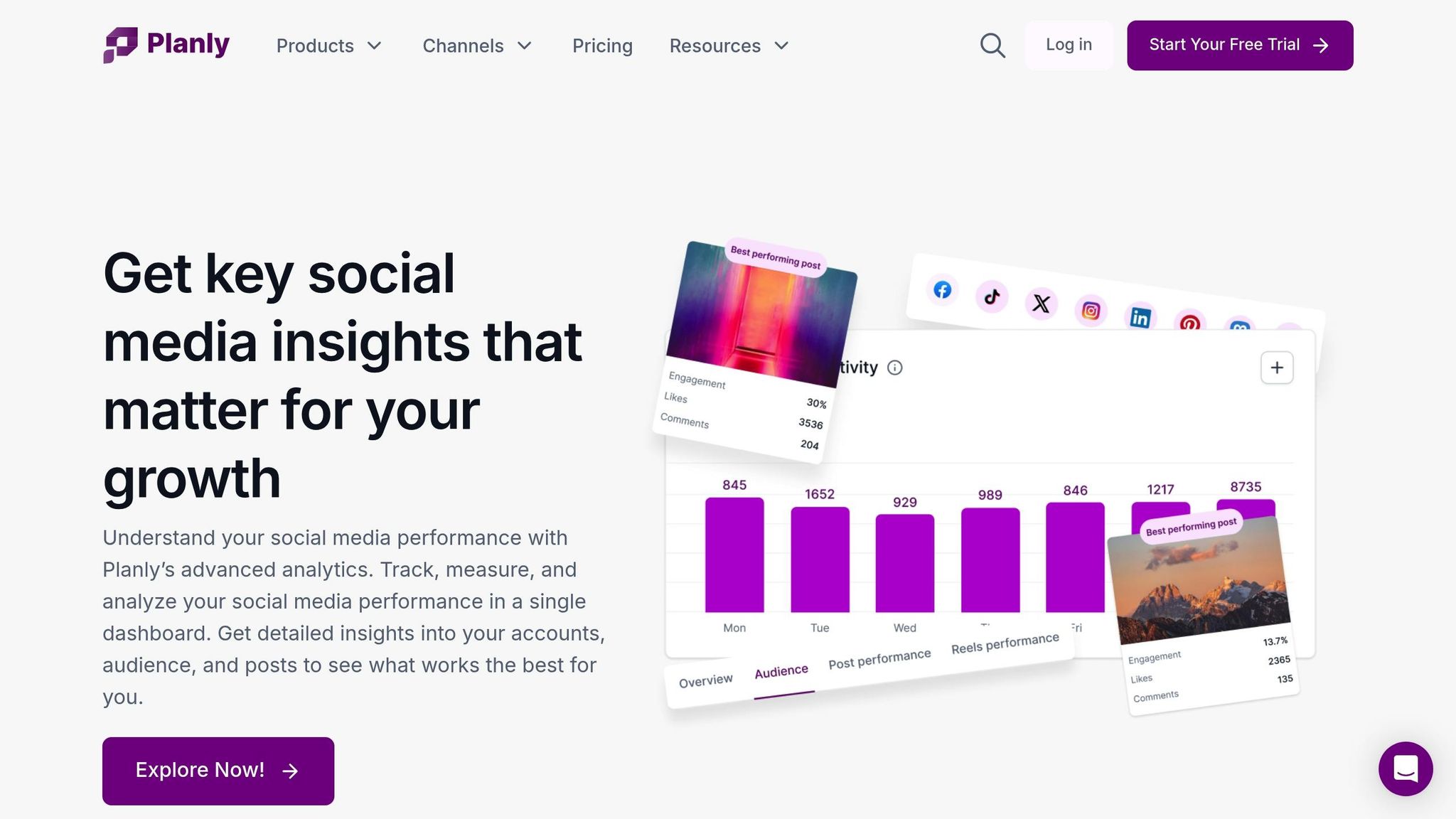
Planly Analytics is all about measuring the return on investment (ROI) for your social media efforts. Unlike general analytics tools, this platform focuses on helping businesses track and analyze their social media performance across various platforms - all from one streamlined dashboard.
Data Integration
Planly Analytics brings all your social media data together in one place. Instead of jumping between different dashboards, you can view performance metrics from multiple platforms in a single, unified interface. Even better, it connects your social media data with website analytics, giving you a complete picture of how your social content drives online engagement. This consolidated view makes it easier to generate custom reports and access real-time insights.
Custom Metrics and Dashboards
The platform takes personalization seriously. You can create dashboards tailored to your needs, showcasing the metrics that matter most to your business. Planly Analytics tracks key social media stats like likes, shares, reach, impressions, engagement rates, follower growth, website clicks, and even location-specific clicks.
Need to share your findings? The platform offers custom reporting options, including tailored PDF exports. It also dives deep into audience analytics, providing demographic details like age and gender. This helps content creators see not just how their posts perform but also who’s engaging with them.
Real-Time Monitoring
One of Planly Analytics' standout features is its real-time monitoring. With instant alerts for any significant changes in your metrics, you can act quickly if something unexpected happens. The platform’s automated tracking ensures you’re always up-to-date on performance shifts as they happen. This level of immediacy makes it easier to stay ahead and adapt your strategy on the fly.
3. Swydo
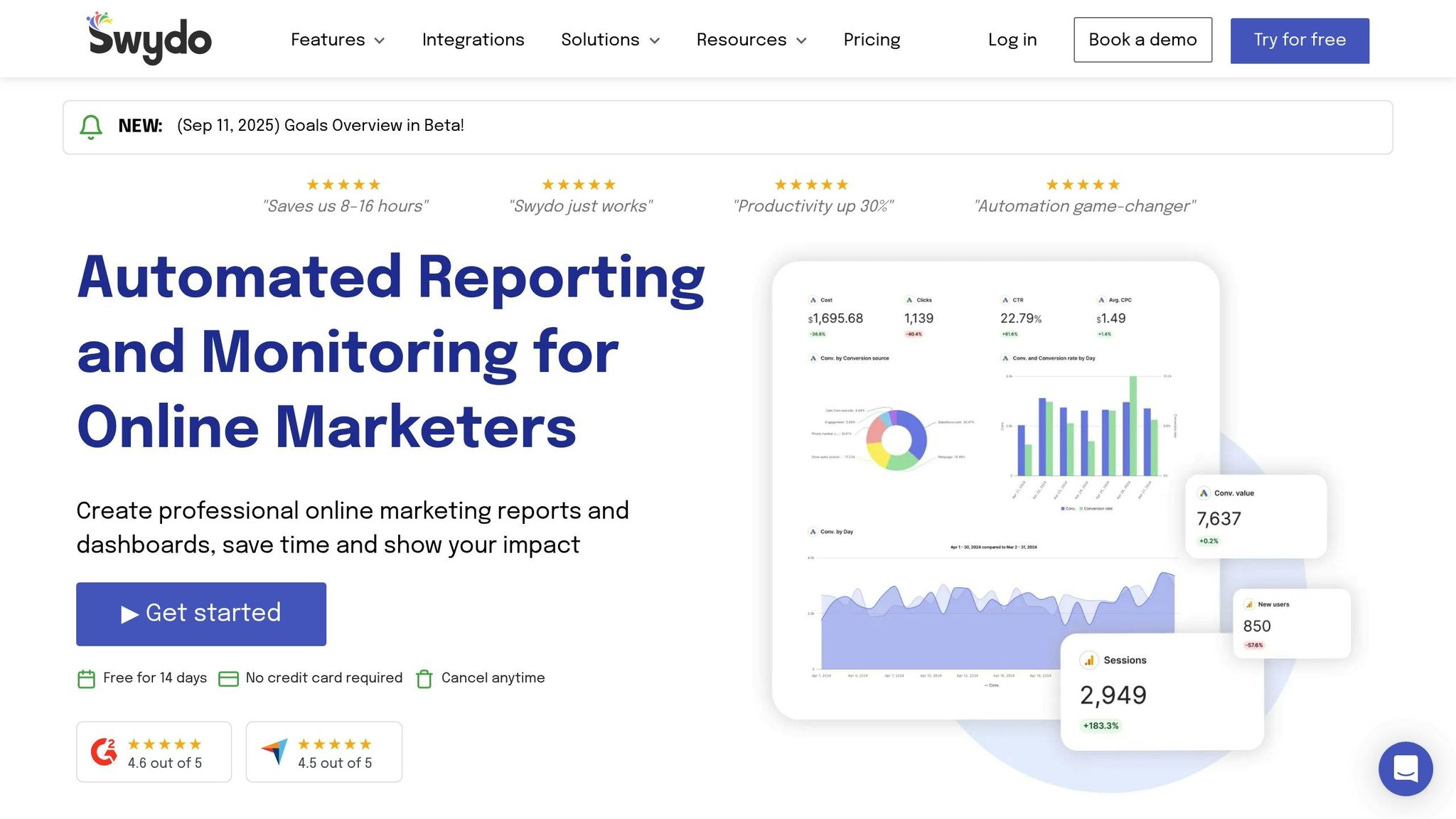
Swydo is designed to help digital marketing agencies and businesses measure the return on investment (ROI) of their content across multiple channels. Its key features include data integration, customizable dashboards, and attribution modeling, making it easier to understand how content efforts impact overall performance.
One of Swydo's strengths is its ability to combine both paid and organic data, offering real-time insights into performance metrics. This unified view allows users to track and evaluate their campaigns more effectively. However, it's always a good idea to consult official sources to confirm these features before making any decisions.
sbb-itb-5be333f
4. MarketMind AI

MarketMind AI is a cutting-edge platform designed to harness predictive analytics and Quantum Marketing Attribution, offering marketers deep insights into content ROI.
Data Integration
MarketMind AI brings together data from various sources, creating a single, unified view of your content's performance. It integrates effortlessly with tools like CRM systems, social media platforms, and customer feedback channels. This streamlined data collection ensures all touchpoints are connected, setting the stage for more accurate attribution analysis.
Attribution Modeling
Using its Quantum Marketing Attribution system, the platform leverages quantum computing to measure the cross-channel impact of marketing efforts. This advanced approach gives marketers a sharper picture of how each content interaction drives ROI.
Predictive Analytics
MarketMind AI boasts an impressive 93% accuracy in predicting customer behavior. This capability empowers marketers to make smarter decisions and fine-tune their content strategies for maximum return.
5. Top SEO Marketing Directory
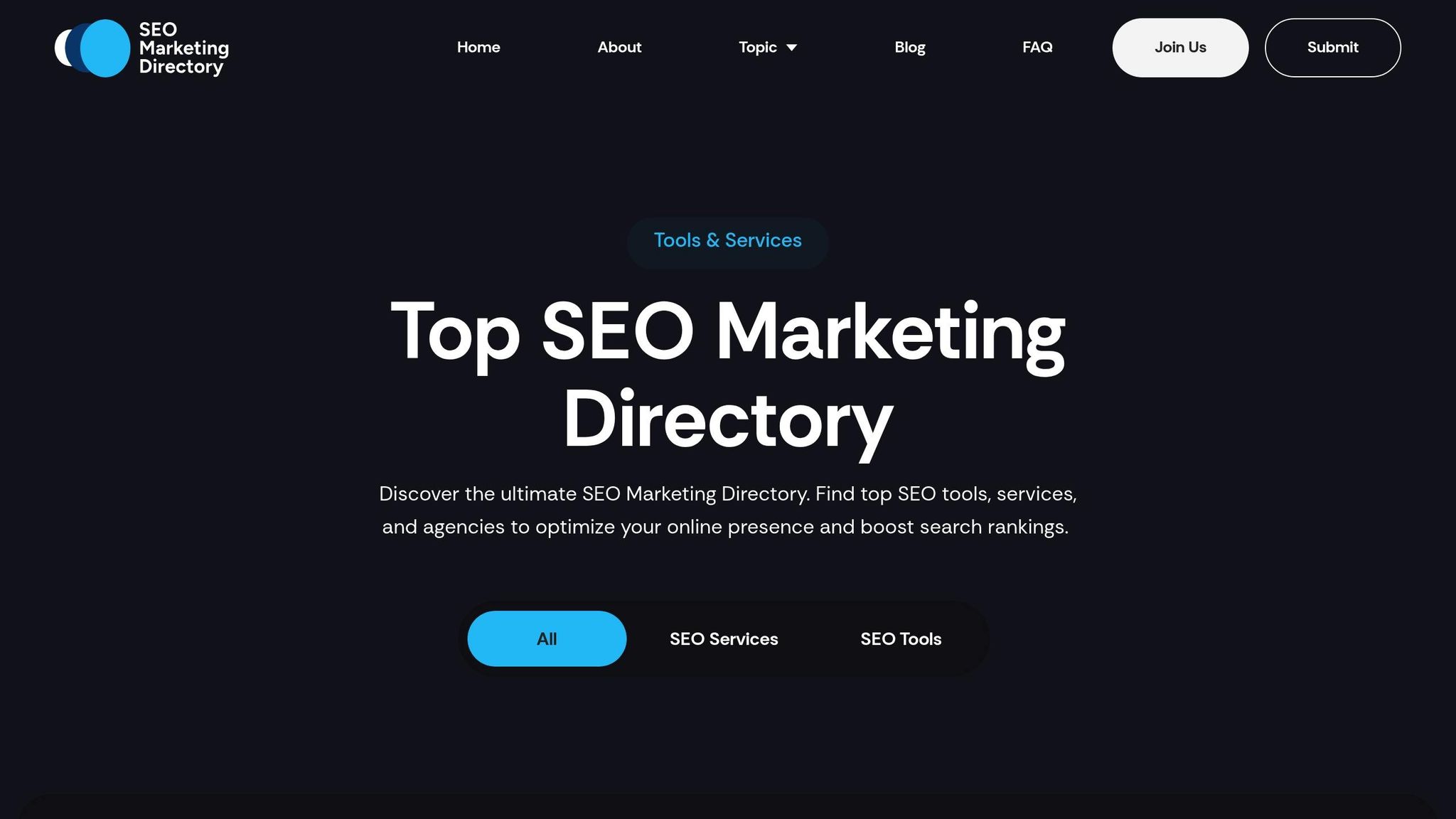
The Top SEO Marketing Directory is a well-organized resource designed to help businesses discover top-notch SEO tools and services to enhance their online performance. While it doesn’t directly calculate content ROI, it offers an in-depth overview of trusted solutions. These include tools for SEO optimization, link building, technical SEO, content optimization, and keyword research - all essential for shaping strategies that improve online visibility and drive revenue.
This directory features detailed listings of leading SEO agencies and software, making it easier to compare options and gain expert insights. By focusing on reliable solutions, it helps businesses streamline their decision-making process and optimize their SEO efforts. Although it doesn’t track ROI directly, the tools and services it highlights can play a critical role in revenue-focused strategies.
What’s more, the directory’s straightforward structure and transparent pricing make it simple for businesses to choose the right tools and services for their needs.
Pricing
| Plan Name | Price | Description |
|---|---|---|
| Basic | Free | Access to a basic directory with essential SEO tools and services. |
| Premium | $49/month | Advanced directory access featuring top-tier SEO tools and agency listings. |
| Enterprise | Custom pricing | Tailored solutions for large businesses with full access to all features. |
Advantages and Disadvantages
When deciding on the right analytics tool, it’s crucial to weigh each option's strengths and limitations against your team’s needs and budget. Below is a breakdown of the key benefits and challenges for each tool.
Google Analytics 4 stands out for its detailed tracking capabilities and seamless integration with other Google services. It excels at monitoring user behavior across multiple touchpoints and offers advanced attribution modeling. However, its complexity can be overwhelming for smaller teams or those new to analytics.
Planly Analytics simplifies social media performance tracking with its user-friendly dashboards. While it’s great for social media ROI, its narrower focus and limited integration options for non-social platforms may not suit broader content strategies.
Swydo is a favorite among agencies thanks to its robust white-label reporting and automation features, making client presentations a breeze. That said, the initial setup can be time-consuming, and its pricing might be a hurdle for smaller businesses.
MarketMind AI uses artificial intelligence to provide predictive insights and identify content trends, helping improve content ROI. However, its recommendations can feel unclear, and it requires a significant amount of data to deliver accurate results.
Top SEO Marketing Directory offers a curated list of vetted SEO tools, making it a helpful resource for building content ROI strategies. While it doesn’t directly calculate ROI metrics, it provides expert guidance and transparent pricing, serving as a great supplement to dedicated analytics tools.
| Tool | Key Advantages | Main Limitations |
|---|---|---|
| Google Analytics 4 | Free tier, Google integration | Complex interface, steep learning curve |
| Planly Analytics | Social media focus, easy to use | Limited integration beyond social media |
| Swydo | White-label reporting, automation | High cost, lengthy setup process |
| MarketMind AI | Predictive AI insights | Opaque outputs, data-heavy requirements |
| Top SEO Marketing Directory | Curated SEO tools, expert guidance | No direct ROI tracking, needs extra tools |
To make the best choice, consider your team’s size, expertise, and specific goals. Larger organizations may find the power of Google Analytics 4 indispensable, while smaller teams might gravitate toward the simplicity of Planly Analytics. Agencies often turn to Swydo for its tailored reporting features, and businesses looking to stay ahead of trends may appreciate MarketMind AI’s predictive capabilities.
Budget is another key factor. Google Analytics 4 offers a robust free tier, making it an attractive option for cost-conscious teams. On the other hand, premium tools like Top SEO Marketing Directory charge $49 per month, providing affordable access to curated SEO resources and expert advice. Balancing your budget with your analytics needs will help you land on the right tool.
Conclusion
Accurately measuring content ROI in 2025 means selecting tools that fit your business goals, team size, and budget. Here’s a quick breakdown to help you decide:
- Small to medium businesses: Google Analytics 4’s free tier is a great starting point, offering robust integrations. While there’s a learning curve, the insights gained make training worthwhile.
- Social media-focused companies: Planly Analytics simplifies social ROI tracking without unnecessary complexity, making it a smart choice.
- Marketing agencies: Swydo stands out with white-label reporting and automation features, saving time and justifying its $200+ price tag for agencies managing multiple clients.
- Data-driven organizations: MarketMind AI’s predictive insights are powerful but work best with substantial historical data.
For additional resources, the Top SEO Marketing Directory can help you find specialized tools to further refine your analytics approach.
Most businesses find that no single tool does it all. Many combine platforms like Google Analytics 4 for overall tracking, Planly Analytics for social media insights, and directories like Top SEO Marketing Directory to discover niche solutions as their needs evolve.
The best approach? Start with one tool that matches your immediate priorities, then expand your toolkit as your strategy grows. By integrating these tools into your analytics workflow, you’ll continuously improve how you measure and understand content ROI.
FAQs
How do I choose the best tool to measure content ROI for my business size and budget?
Choosing the best tool to measure content ROI depends on your business's unique needs, size, and budget. For small businesses working with limited resources, simple options like Google Analytics or basic ROI calculators can do the job. They're affordable, easy to use, and still provide valuable insights.
On the other hand, larger organizations dealing with more complex data and bigger budgets might need advanced tools. These often come with features like detailed forecasting, in-depth analytics, and smarter budget allocation capabilities.
When deciding, think about your team's technical skills and the funds you have available. The key is to pick a tool that delivers accurate insights without being overly complicated or expensive. Your ideal solution should match your business's scale and priorities while offering actionable data to shape your strategy.
What are the benefits of using predictive analytics in tools like MarketMind AI to measure content ROI?
Predictive analytics, as utilized in tools like MarketMind AI, offers businesses a powerful way to evaluate content ROI. By forecasting which campaigns, channels, or strategies are likely to perform best, companies can allocate resources more effectively. This means cutting unnecessary expenses while ensuring maximum impact.
Beyond resource optimization, predictive models also help identify upcoming trends and predict customer behavior. These insights pave the way for creating content that feels more personal and resonates with audiences. With this approach, businesses can outpace competitors and achieve better ROI through precise and impactful marketing efforts.
How is Google Analytics 4's attribution modeling better than traditional last-click models for measuring content ROI?
Google Analytics 4 (GA4) takes a data-driven attribution approach as its default model, assigning credit for conversions based on the contribution of each touchpoint in the customer journey. Instead of relying on the outdated last-click model - which gives all the credit to the final interaction - this method analyzes multiple touchpoints to offer a clearer understanding of your content’s impact on ROI.
By evaluating every step in the conversion path, GA4’s model provides deeper insights into how your content influences user behavior and drives results. This allows you to fine-tune your strategy and concentrate on the elements that deliver real value.
